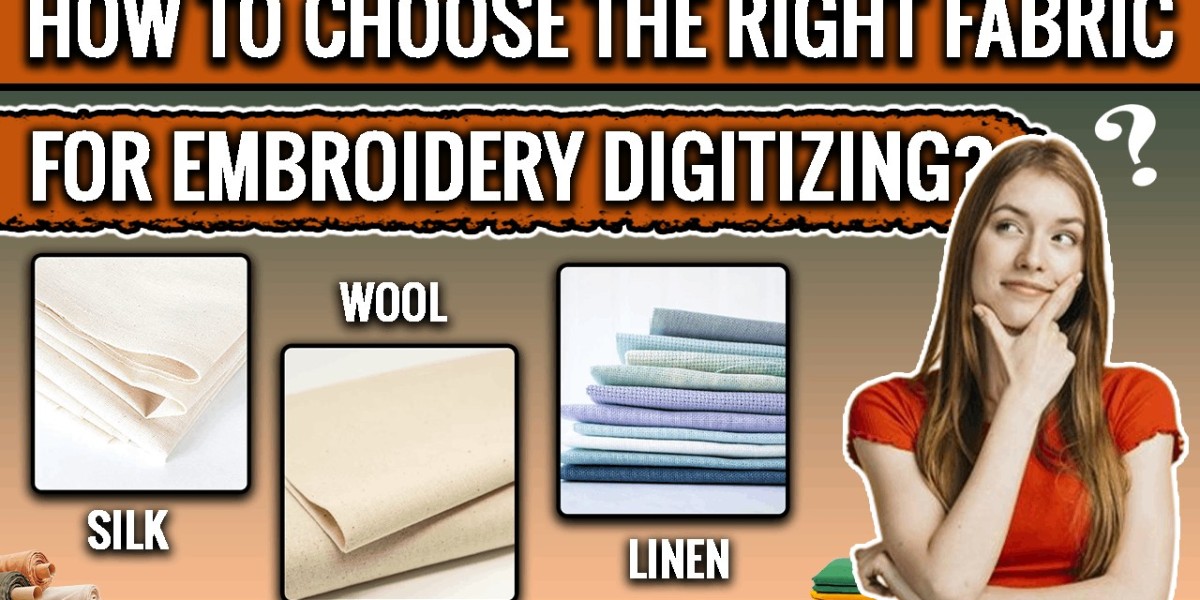Choosing the right fabric for embroidery digitizing is essential for achieving optimal results in your embroidery projects. Whether you're embroidering garments, accessories, or home decor items, the type of fabric you select can significantly impact the overall appearance, durability, and quality of the embroidered design. From considering fabric weight and texture to evaluating stitch compatibility and stability, there are several factors to keep in mind when choosing the perfect fabric for embroidery digitizing. Let's explore some key considerations to help you make an informed decision:
1. Fabric Weight and Density
The weight and density of the fabric play a crucial role in determining its suitability for embroidery digitizing. Lightweight fabrics, such as cotton voile or chiffon, may require stabilizers or interfacing to prevent puckering or distortion during stitching. Conversely, heavier fabrics, such as denim or canvas, offer more stability and support for intricate embroidery designs. When selecting fabric for online embroidery digitizing, consider the weight and density of the fabric relative to the complexity of the design and the desired end result.
2. Fabric Texture and Surface
The texture and surface of the fabric can also impact the appearance and stitch quality of the embroidered design. Smooth and tightly woven fabrics, such as satin or poplin, provide a clean and uniform surface for embroidery, resulting in crisp and precise stitches. Conversely, textured or loosely woven fabrics, such as linen or burlap, may produce more rustic or uneven embroidery effects. When choosing fabric for embroidery digitizing, consider the texture and surface characteristics that complement the desired aesthetic and style of the embroidery design.
3. Fabric Stretch and Stability
The stretch and stability of the fabric are important factors to consider when embroidering stretchy or unstable fabrics, such as knits or jersey. These fabrics require special handling to prevent distortion or stretching during stitching. Using stabilizers or backing materials can help stabilize stretchy fabrics and ensure smooth and consistent embroidery results. When selecting fabric for embroidery digitizing, choose fabrics with adequate stretch and stability for the intended embroidery project, and use appropriate stabilizers or backing materials to support the stitching process.
4. Fabric Color and Print
The color and print of the fabric can enhance or detract from the overall impact of the embroidered design. Light-colored fabrics provide a neutral backdrop for vibrant or intricate embroidery designs, while dark-colored fabrics offer contrast and drama. When selecting fabric for embroidery digitizing, consider the color and print of the fabric in relation to the colors and details of the embroidery design. Choose fabrics that complement the colors and style of the design, and ensure that the fabric print does not compete with or overwhelm the embroidered motif.
5. Fabric Durability and Care Requirements
The durability and care requirements of the fabric are important considerations, particularly for garments or items that will undergo frequent wear or laundering. Choose fabrics that are durable and easy to care for, such as cotton or polyester blends, for projects that require long-term durability and versatility. Consider the laundering instructions and maintenance requirements of the fabric when selecting fabric for embroidery digitizing, and choose fabrics that are compatible with the intended use and care routine of the embroidered item.
6. Test Stitching and Sampling
Before committing to a large-scale embroidery project, it's a good idea to conduct test stitching and sampling on a small piece of fabric to evaluate the compatibility and performance of the fabric with the embroidery design. Test stitching allows you to assess factors such as stitch quality, tension, stability, and fabric response, helping you make any necessary adjustments or refinements before proceeding with the final embroidery project.
7. Convert Images To Embroidery File
conclusion
In conclusion, choosing the right fabric for embroidery digitizing is essential for achieving optimal results in your embroidery projects. By considering factors such as fabric weight and density, texture and surface characteristics, stretch and stability, color and print, durability and care requirements, and conducting test stitching and sampling, you can select the perfect fabric that enhances the beauty and longevity of your embroidered designs. With careful consideration and attention to detail, you can ensure that your embroidery projects shine with precision, quality, and style.








